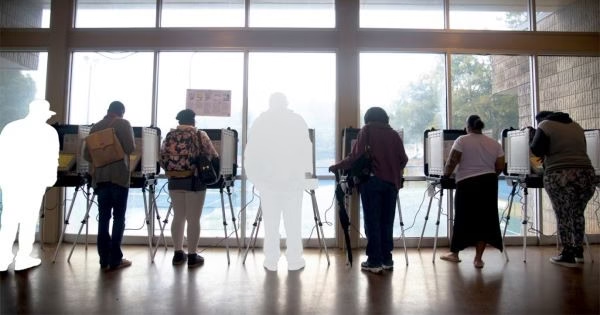https://www.thenation.com/article/society/ice-raid-jaime-alanis-garcia/
https://davidbaconrealitycheck.blogspot.com/2025/07/why-did-this-farmworker-die-in.html
Community and immigrant rights organizations rally in Oakland’s Latino Fruitvale district protesting immigration raids. One sign says “For my father, who was deported. Watch me from Heaven, Papa. This is Our War!”
Jaime Alanis Garcia died of a broken neck in the Ventura County Medical Center on Saturday. He fell 30 feet from the roof of a Glass House Farms greenhouse, where he’d climbed in a desperate effort to get away from Immigration and Customs Enforcement (ICE) agents and National Guard soldiers during an immigration raid on Thursday.
In announcing his death, Alanis’ family called him, “not just a farm worker [but] a human being who deserved dignity. His death is not an isolated tragedy.” The raid, they said, inspired “chaos and fear” among hundreds of farmworkers in the company’s two cannabis farms in Camarillo and Carpenteria, an hour north of Los Angeles.
ICE announced that 319 people had been detained in the raid, and Homeland Security Assistant Secretary for Public Affairs Tricia McLaughlin denied responsibility for Alanis’ death. “This man was not in and has not been in CBP or ICE custody [and] was not being pursued,” she claimed.
Of course, Alanis was being pursued. All the workers were, by dozens of agents in battle gear as they fanned out inside the greenhouse. That pursuit was the reason he climbed to the roof.
Another worker was recorded in a video during the raid after climbing a tall scaffolding. “Do what you want. Say what you say. I’m not coming down,” she cried out. “They say they will come and get us. They are saying whatever they want to get us down. We ask them who they are but they won’t answer.” The video was uploaded onto a website, @mrcheckpoint, used to track raids. The woman’s fate is still not known.
Chaos and fear are deliberately used as weapons to terrorize workers and their families. At Glass House Farms, agents arrived in unmarked tan troop transports whose license plates had been removed. They were dressed in military camouflage uniforms reminiscent of the Afghan and Iraq wars, with balaclavas covering their faces.
Arrests were indiscriminate. After a security guard-a US citizen and US Army veteran-was detained, his family couldn’t even find out where he was being held. Jonathan A. Caravello, Ph.D., also a US citizen and professor at the California State University Channel Islands campus in Camarillo, was also arrested by ICE. A judge finally ordered him released from the Los Angeles Metropolitan Detention Center on July 14.
After the raid President Trump claimed the agents were under attack, and gave ICE “Total Authorization … using whatever means is necessary.” A few days earlier, after sending mounted agents and National Guard soldiers into Los Angeles’ Macarthur Park, White House Deputy Chief of Staff Stephen Miller said no one could stop these military-style deployments. “You have no say in this at all,” he told Mayor Karen Bass. Miller has given DHS a quota of 3,000 arrests per day
Immigration authorities knew that a death like Alanis’ would happen sooner or later. There is a long history of people dying while fleeing from ICE. Santos Garcia and Marcelina Garcia were two indigenous Mixtec farmworkers killed when their car overturned, trying to escape from ICE agents in Delano in 2018. Agents had been staking out roads to stop laborers going to work-a terror tactic during Trump’s first administration, but not one he invented. Five migrants were killed in the 1992 crash of a van fleeing the Border Patrol in Temecula, and two years later another seven died in another truck pursued by agents in the same area.
Inspiring terror, as a tactic, is openly acknowledged. Gregory Bovino, a Border Patrol official in charge of the Southern California region, said “Illegal aliens had the opportunity to self deport. Now we’ll help things along a bit.” Bovino earlier led a January raid the day after Trump’s election victory was certified, targeting farmworkers in roadblocks and Home Depot parking lots in the San Joaquin Valley. “Self-deportation” is the euphemism used by immigration authorities when people are made so fearful that they leave their homes to return to their countries of origin, or simply to another safer place.
But the military deployment of ICE agents is also a response to rising protest that is defying this campaign of intimidation. Within minutes of the arrival of agents at the greenhouses, calls on cellphones brought family members and community activists to the sites. They were met with tear gas, “flash bang” grenades and smoke bombs.
Immigrant communities have been preparing for raids since Trump’s election. For months in the state’s farmworker towns young people (mostly documented and US citizens born here) have organized marches to defend their parents, in an inspiring demonstration of courage and determination. The conduct of the raids, by armed soldiers in combat fatigues, is an effort by ICE and Homeland Security to intimidate them into halting any action that might interfere.
In many communities activist groups like Union del Barrio and the Coalition for Humane Immigrant Rights in Los Angeles have formed teams to monitor the movements of ICE and Border Patrol agents. They carry bullhorns, and warn community residents not to open their doors when a raid seems likely. White House border czar Tom Homan was explicit about consequences. “The rhetoric keeps rising and rising and rising – someone’s gonna get hurt,” Homan told NBC News a month prior to the Glass House raid. “If this violence isn’t tamped down, someone’s gonna die, and that’s just that’s just a cold fact of life.”
The Trump administration was careful to target a marijuana-growing operation because it provides headlines appealing to its MAGA base, while not threatening its big ag supporters. Fox News accused California Governor Newsom of receiving big campaign donations from Glass House co-founder Graham Farrar. Like most big marijuana operations, Glass House Farms donates to state politicians from both parties because it depends on their votes for the license to operate. Marijuana is still illegal under Federal legislation, and Federal law enforcement has long made California cannabis a target.
ICE even claimed that its raid had “rescued” a handful of minors. A statement by the United Farm Workers responded, “detaining and deporting children is not a solution for child labor.”
The Trump administration, however, has been careful not to conduct raids targeting big corporate farms. California’s central coast, where Glass House Farms is located, is the nation’s biggest strawberry-growing area. While fear in the coast’s farmworker towns is endemic, the strawberry crop is getting harvested. In Washington State’s Wenatchee River Valley-the largest apple growing area in the U.S.-Jon Folden of Blue Bird farm cooperative says, “We’ve not heard of any real raids.” The Border Patrol’s Bovino says, “For us, targeting agricultural workers at their job, absolutely not.”
The Glass House raid didn’t even make it into the news section of the website of the Western Growers Association, which includes the country’s largest growers of fruits and vegetables. Their silence, in fact, is deafening. There is no WGA statement opposing raids, and its website reassures growers, “While enforcement activities have not targeted agriculture, here are some prudent proactive steps to respond appropriately to potential [ICE] visits.” Among them, it advertises, “Western Growers H-2A Services available to support growers during this complex labor environment … helping members secure a capable, reliable and legal workforce.”
Last year growers recruited 384,000 H-2A workers (a sixth of the country’s farm labor workforce), mostly from Mexico, under temporary work contracts. These laborers can only work for the grower who recruits them, and can be fired and deported for protesting, organizing or simply working too slowly.
In the fields surrounding Glass House Farms, central coast strawberries are picked because growers increasingly rely on this program. According to the Employer Data Hub of the US Citizenship and Immigration Services, agribusiness has brought 8,140 workers to Santa Barbara and San Luis Obispo Counties, about a quarter of all the farm workforce.
Trump has promised to make this program even more grower-friendly, and big ag has supported him overwhelmingly. The current secretary of agriculture, Brooke Rollins, told Congress that she’d modernize the H-2A program “to do everything we can to make sure that none of these farms or dairy producers are put out of business [by immigration enforcement].”
At the end of June Trump scrapped the Farmworker Protection Rule, regulations put in place by Julie Su, Biden’s Secretary of Labor, that provided minimal protections for H-2A workers. By getting rid of it, growers can now bar outsiders (community groups or unions) from labor camps, give workers contracts in languages they can’t read, retaliate against workers who complain of bad conditions, and even stop using seat belts in the vehicles transporting laborers to the fields. In 2019 Trump froze the minimum wage for H-2A workers, and growers are calling on Congress to support a bill that would do that permanently.
Pushback against ICE, however, continues to win in court. The day after agents arrived at Glass House farms, U.S. District Judge Maame E. Frimpong in Los Angeles made permanent two temporary restraining orders which would limit the ways ICE can conduct immigration raids. One prohibits agents from stopping and detaining people based on skin color, language or other general factors used to profile immigrants. The second mandates legal representation for detainees held in the notorious B-18 jail in downtown L.A.
DHS’s Tricia McLaughlin attacked Judge Frimpong for “undermining the will of the American people,” and claimed “”enforcement operations are highly targeted.” That was certainly how Jaime Alanis must have felt before he fell.
So who gained and who paid in the Glass House raid? The Trump administration hyped up the MAGA base once again with images of extreme force deployed against immigrant farmworkers. Big Ag growers, meanwhile, seem immune, continuing to pay wages at the bottom, with government-sponsored access to a labor program that has been described as “close to slavery.” Terrorized farmworker families risk deportation if they try to organize and raise those wages, while living in fear that parents will be picked up when their kids are in school.












